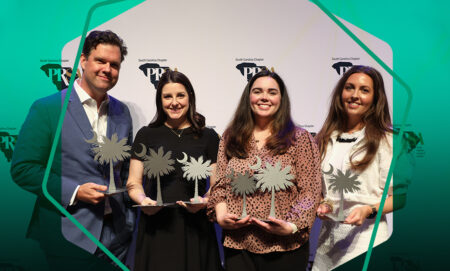Innovation through Idea Generation: Practices that drive inventive ideas that lead to growth
Innovation, it’s a word that’s on the lips of every business leader today. Innovation can be defined several different ways but, in our culture, we are identifying innovation as “a big idea that creates value.” We believe a process can be innovative and marketing communications approaches can too. Designing big breakthroughs is always the goal behind innovative ideas but it’s also important to understand that everyday improvements that make complicated concepts easier to understand are inventive, measurable and valuable.
Designing innovative practices that lead to value-driven ideas can sometimes be difficult for organizations to harness. Where should an organization begin? Within our own organization, we always begin with a key question: “Is there a better way to do things?” We begin with customer-focused research in order to fully understand the needs and desires of our audiences. We are also a highly collaborative organization, oftentimes cross-pollinating with our agency teams and our client teams. Therefore, it is certainly fitting to involve one of our clients, Stefanie Goebeler, as a partner for this article; providing experience and advice into designing practices that will drive and inspire innovative thought.
The following process helped to design several strategic initiatives for Midlands Technical College (MTC). It’s a proven approach that the CN team and MTC marketing team used to address specific objectives with creative brainstorming and innovative thinking.
Be Relentlessly Curious
Do your homework: review past successes, analyze your market and identify new opportunities for consumer connections.

Have No Fear
- Keep an open mind and constantly ask, “what if?”
- All ideas are worthy: Avoid shutting down new ways of thinking until the idea is fully vetted.
Focus on the Audience
- Create personas: Understand who the audience is and what matters to them. Understand their emotional and environmental preferences and motivators.
- Use data: Gain insight into how and why they make decisions.

Build Collaborative Teams
Developing cross-functional teams with various levels of expertise and differing viewpoints is critical in any idea generation exercise that is designed to reach, influence and motivate broad audiences.
Experiment and Test
- Carefully evaluate different scenarios and alternative outcomes.
- Accept the fact that “you don’t know what you don’t know” and ask, “How can I learn more?”
- Test your assumptions. Gather data and insights that provide credibility to the ideas.

Be a Problem Solver
The first step to a problem-solver mentality is understanding that change is inevitable – in every business, customer segment and industry. By harnessing processes that inspire innovative thoughts and ideas, change can be seen as an opportunity to solve today’s problems and reshape the landscape of tomorrow.
Practice Makes Perfect
Throw Spaghetti: In normal times, it can seem like a waste of energy and talents to “throw spaghetti against the wall and see what sticks.” However, as we know all too well, the COVID-19 environment has been anything but normal. Sure, you want your results to be specific, actionable, measurable… yada-yada-yada. But if you start with using those old-school metrics as a litmus test for deciding whether or not to put energy into new, brainstormed ideas, you might miss out on innovation. I say, throw the spaghetti, and throw a lot of it. You’ll know pretty quickly if it’s going to stick. If not, you can just as quickly move on to the next idea.

DON’T Herd Cats: Cats are a species known for going their own way. They are not meant to be herded. Similarly, neither should humans in a time of innovation. If you try to herd your team members and colleagues within different divisions, you are going to stifle the creation before it can happen. Instead, give them the goal that needs to be accomplished. Let them individually, or in smaller groups, go and brainstorm ways to accomplish the goal. Tell them there are no rules and no restrictions. Reinforce this several times – let them know you mean it. This will let them free their minds, eliminate the “group think” barrier, and just maybe come up with a new idea that is outside any box we would have originally tried to put it in if we tried to herd the cats at the beginning.
Take a look at some of our innovation and ideas successfully generated for MTC.

Stefanie Goebeler, AVP Marketing Communications, Midlands Technical College











